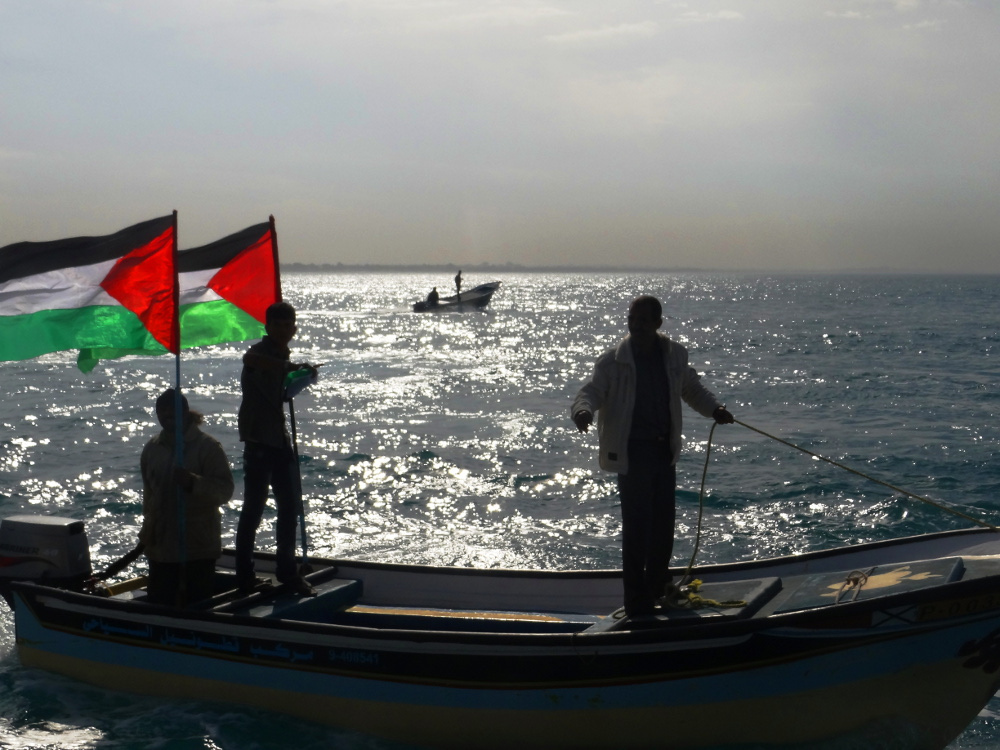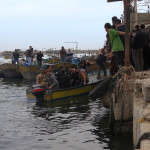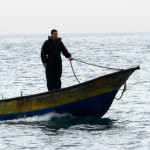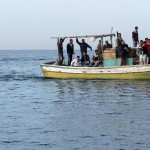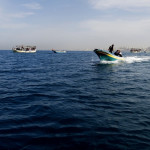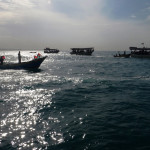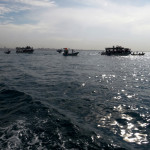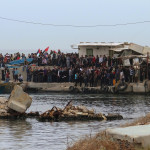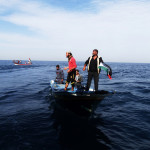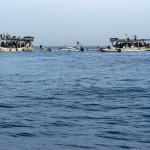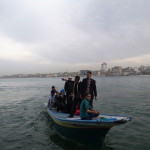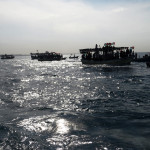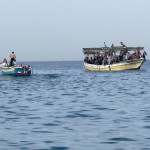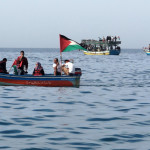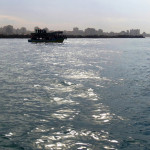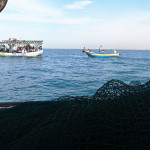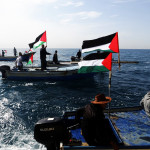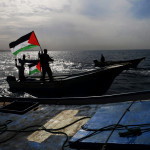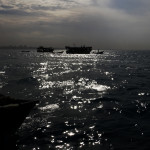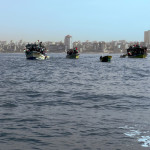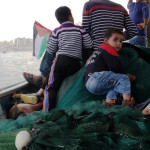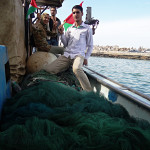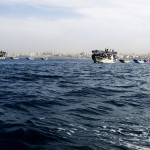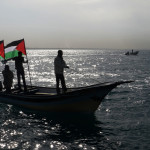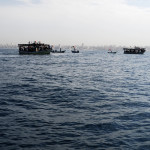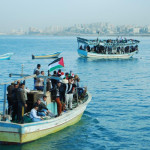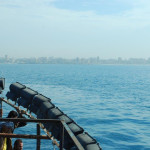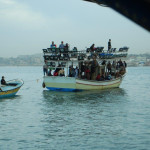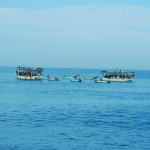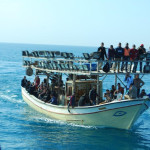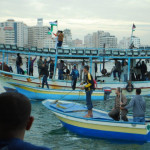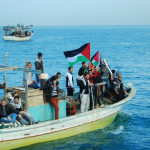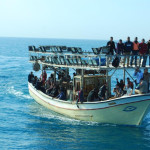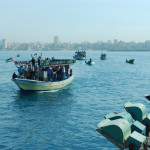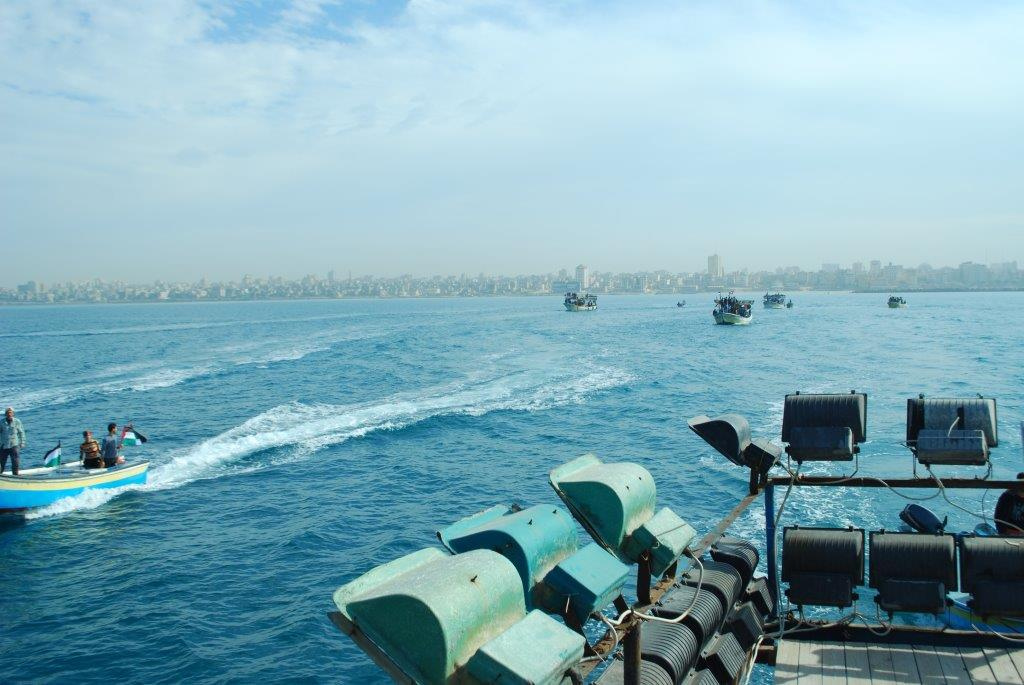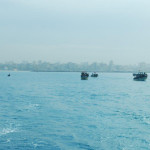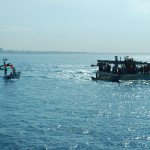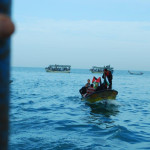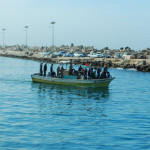4th December 2013 | International Solidarity Movement, Charlie Andreasson | Gaza, Occupied Palestine
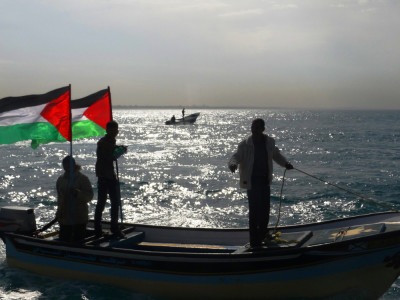
On Monday, 2nd December 2013, 200-250 Palestinians, foreign activists and journalists, many from international media, gathered in the Gaza seaport for a joint action to alert the world about the siege and its consequences for fishermen pursuing their profession. The action resulted from long negotiations between the event’s initiators, the Intifada Youth Coalition, and the General Union of Fishermen. The stumbling block has been whether the siege would be broken or not. It was a negotiation from which the fishermen emerged victorious. The illegal and inhumane siege would be highlighted but not broken. The risk was imminent that they would be attacked and have their boats confiscated.
One by one, the boats sailed out of the harbor, waited for each other, then went out together at a speed of three to four knots. In total, there were seven large boats ,with a maximum length of 20 meters, and eleven smaller, open ones. The atmosphere on board was good. Flags waved, people sang, and no sign of tension or nervousness appeared. Maybe it was a taste of freedom participants felt, an early celebration of once again being able to sail and fish in their own waters without fear of being attacked by another nation’s military power, to regain an area that far exceeds all the occupied occupied land in the West Bank, including East Jerusalem.
What I saw on board was joy and anticipation. A single F-16 that flew over us attracted no interest, but a small school of dolphins did. The only ones who seemed worried was the TV crew that had plastic bags over their equipment. And the fishermen. Those who have real reason to worry, those who have the greatest reason to remind the world about the crimes they face, who by their own admission have been called by the Israeli intelligence service, the Mossad, which warned them against participating in the campaign.
We stopped after sailing two nautical miles from the coast of Gaza, and the crew turned the boat, preparing to sail back as soon as the journalists got their pictures. But it was also then that the Intifada Youth Coalition began to press to get closer to Israel’s unilaterally-imposed fishing limit of six nautical miles. Even the journalists wanted pictures other than flags waving or dolphins jumping. And this was also a chance for the fishermen to show the world the risks they face daily.
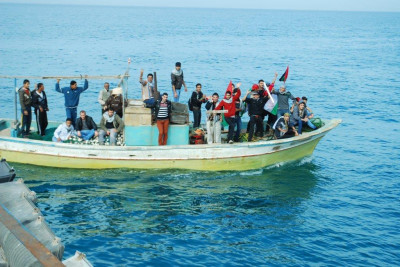
The voyage to the next stop, at the four-nautical-mile line, was characterized by increased attention. The limit lay against the horizon, and two vessels that could be seen were assumed to be Israeli gunboats. They did not appear to move, just lie and wait. And on board the voices rose more loudly from those who wanted to continue nearer the limit, maybe even try to break it, and those who risked everything.
But at four and a half mile the intellect won, and we turned back towards the harbor. The television teams did not get the pictures they might have hoped for, and tomorrow they would point their cameras in another direction. But what will happen when the fishermen no longer have the media on board and when no international activists are present? We did not have to wait long for the answer.
Barely three hours later came the first attack on a fishing boat, followed after less than an hour after by the next. We can only speculate about whether they came as retaliation for today’s action. But we know that assaults on fishermen continue, and will continue until the world seriously pressures Israel to cease its military attacks against a civilian population.

